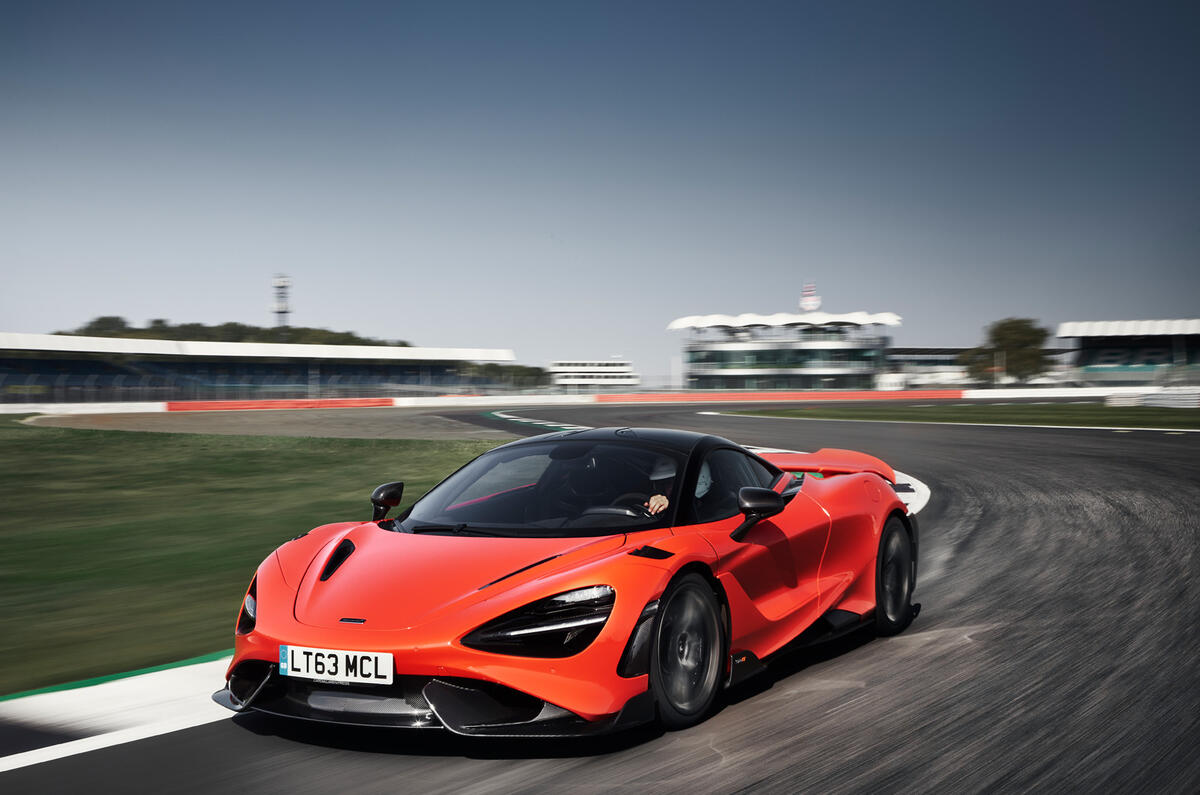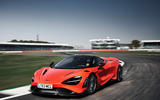The effort, expertise and expense that has gone into what must count as Woking’s most committed attempt yet at a special-series supercar is quite something in itself. It must be so hard taking weight out of, and adding outright track performance and dynamic purpose to, cars like the McLaren 720S which, let’s face it, are damned light, fast and monstrously purposeful road cars already. And yet, thanks to the kind of attention-to-detail that accounts for the weight of titanium wheel nuts and cabin carpets among other things, the 765LT represents a weight saving of up to 80kg relative to its base car.
In order to hit that figure, you have to pay extra for some lightweight body panels and be satisfied not to have air conditioning or an audio system. But, if you’re prepared to pay extra for some of them, every external panel and functioning aerodynamic feature on this car can be made out of carbonfibre. Its window glazing is 0.8mm thinner than is a 720S’. It’s practically standing there in crate paper underpants.
A 765LT is at its lightest, in fact, only 30kg heavier than Woking’s trackday immortal, the McLaren Senna; it also has the same amount of torque and only 34 horsepower less peak power. That makes it considerably more powerful, on paper, than a Ferrari F8 Tributo; very nearly as punchy, in fact, as a V12-engined Lamborghini Aventador SVJ and about 300kg lighter.
And while on the one hand, McLaren is reluctant to play up the relationship between this new Longtail and the Senna, on the other hand it’ll freely tell you, with a wink, that it ‘borrowed’ the Senna’s handmade carbon brake discs and special calipers for this car, as well as its lightweight engine pistons and conrods, and its lightweight, deep-winged carbon bucket seats. The 765LT uses Pirelli’s stickiest Trofeo R road-legal track tyres, just like the Senna did.
Meanwhile, its suspension specification and tuning makes it very clear that, when McLaren talks in general terms about the new levels of driver engagement it targeted for the car, and the limit handling exploitability it aimed for, the departure point was a key rebalancing of the 720S’ grip levels. The car rides some 5mm lower than a 720S at the front axle, and has a front track that’s 6mm wider. Those two changes alone – inclining the car’s roll axis towards the nose and creating more grip and mechanical advantage for the front wheels – provide much of the extra bite perceptible in its handling. The car’s interlinked ‘active’ damping system has been overhauled, too, although less widely; it's been given steel-skinned gas accumulators for better track robustness, and recalibrated with new software. The 765LT’s coil springs themselves, meanwhile, are 20 per cent stiffer all round than those of a 720S, with new lightweight main springs and secondary rebound ‘helper’ springs replacing the simpler rising-rate spring setup of the 720S.
















































